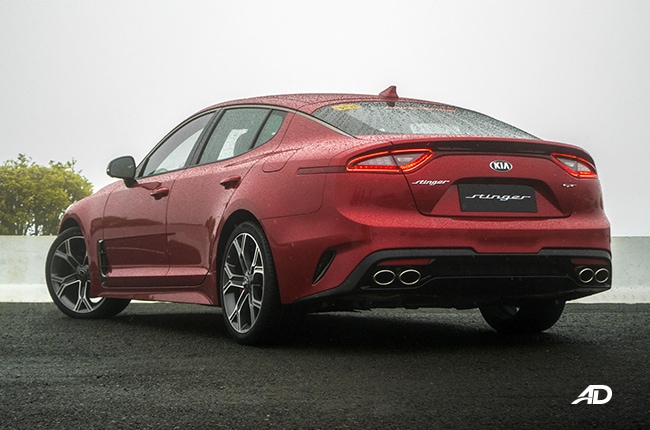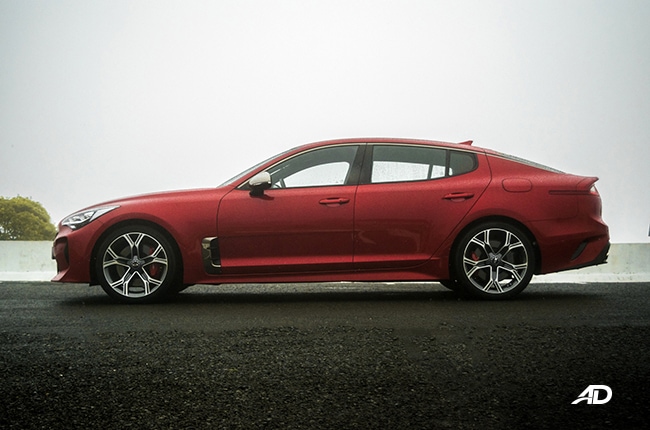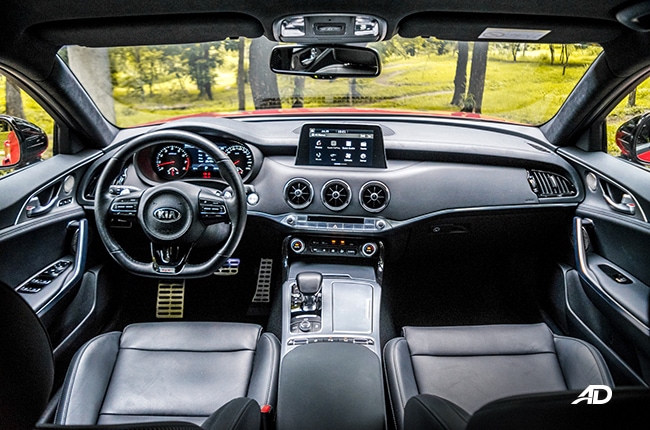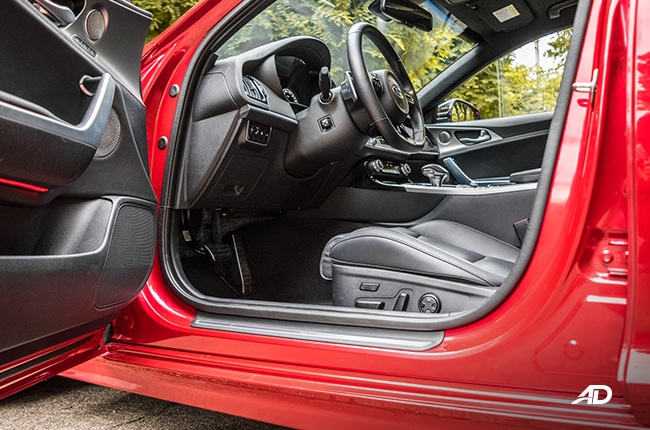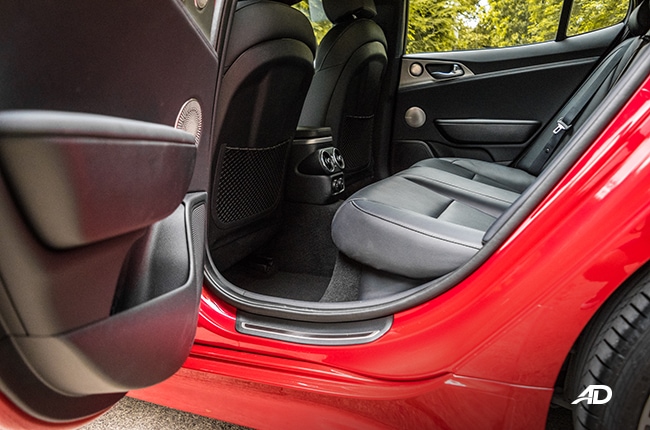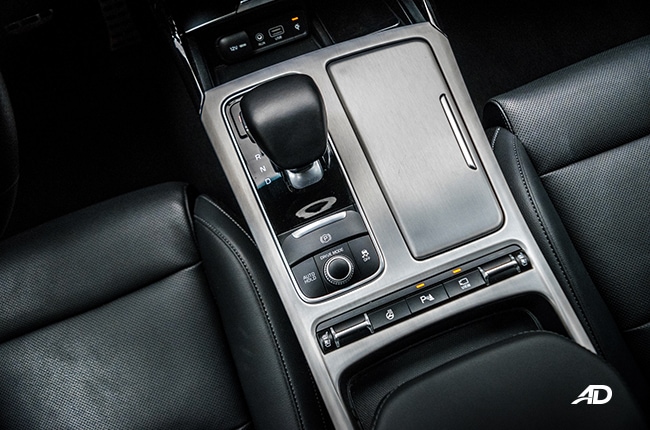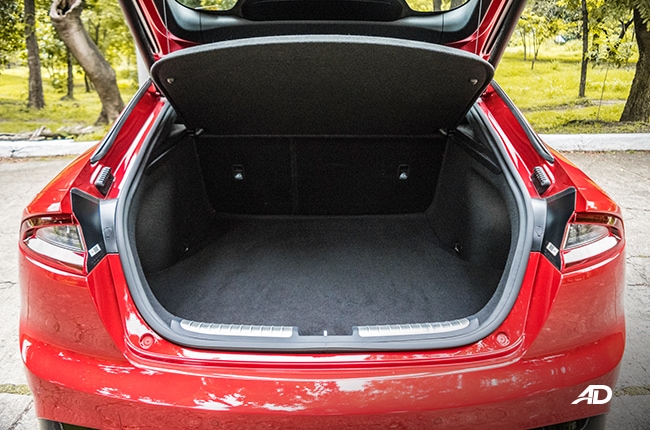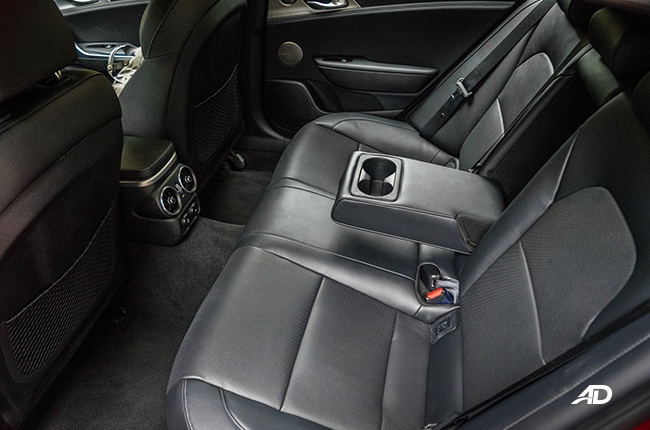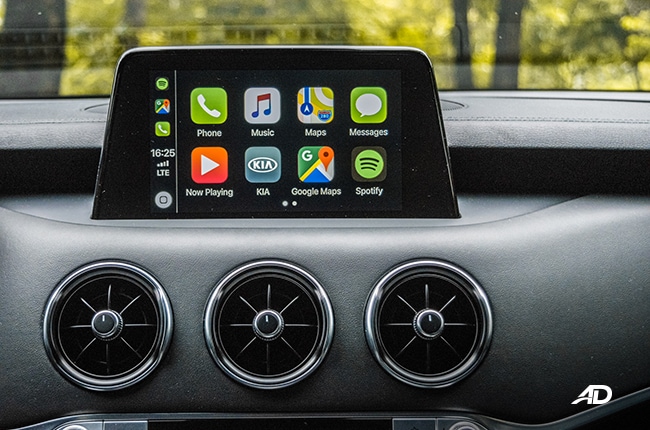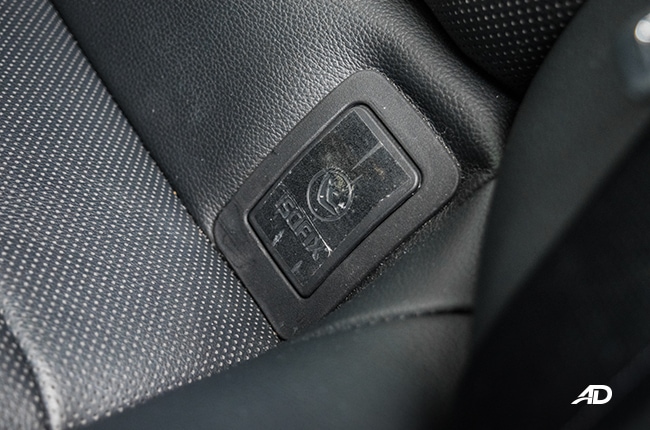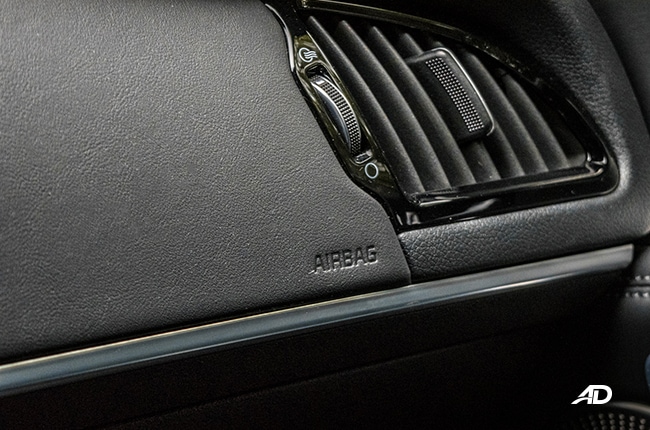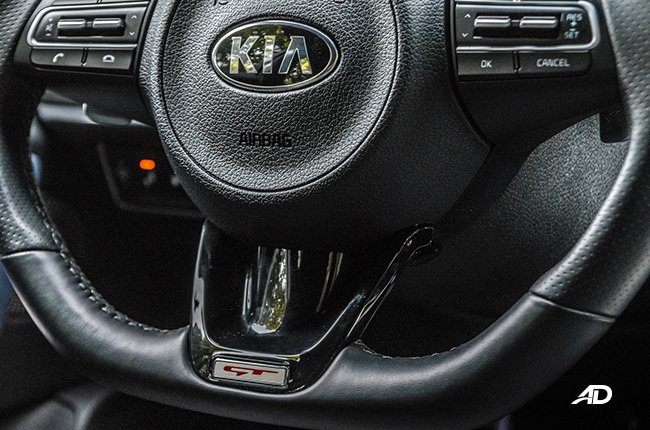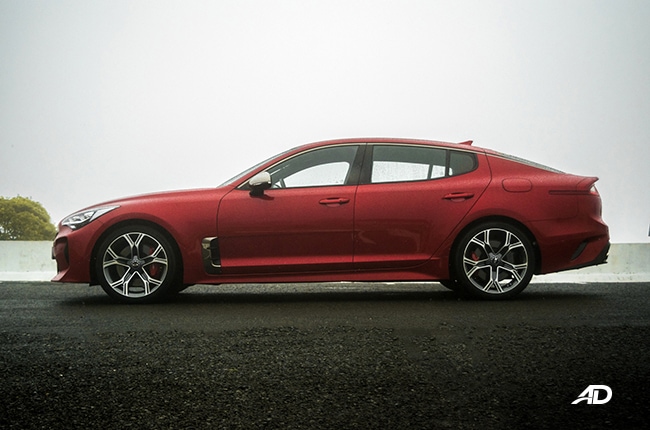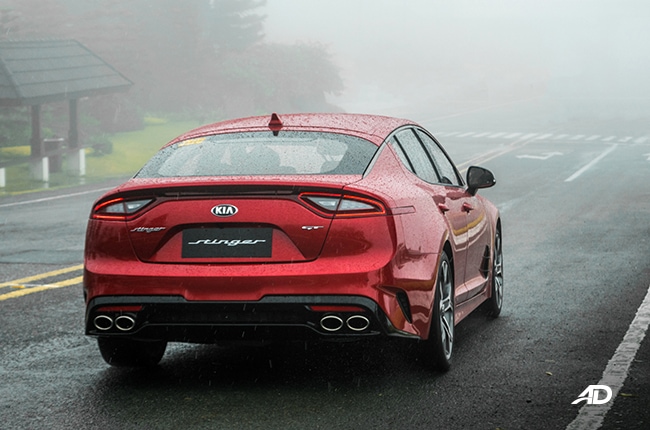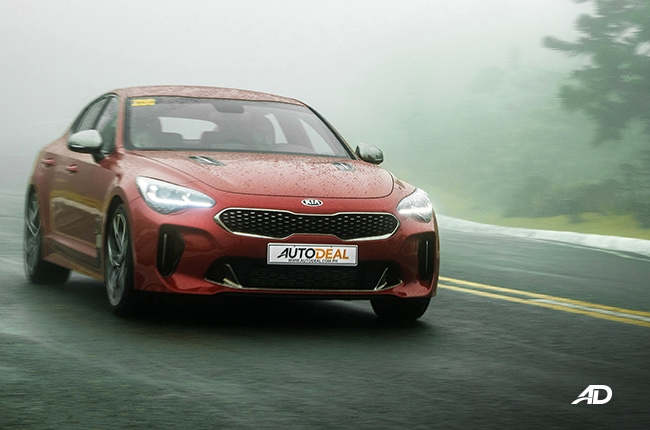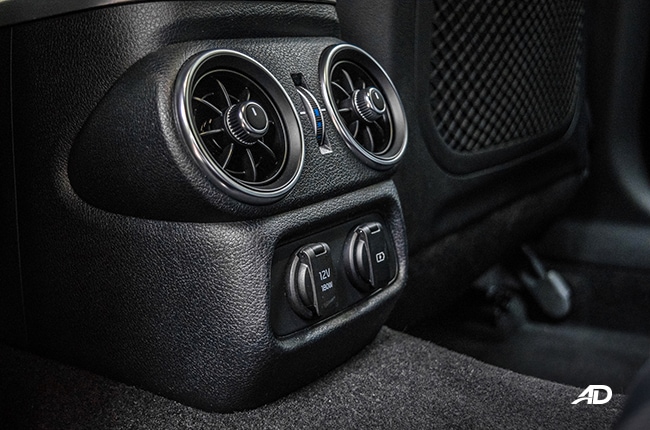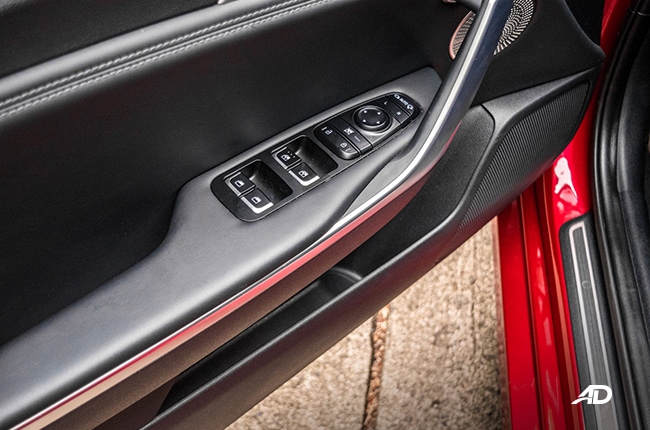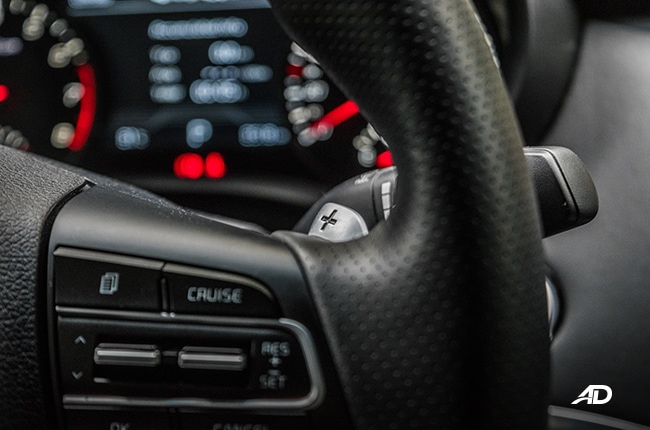
News of the Kia Stinger’s Philippine debut broke out as soon as the South Korean company announced its reform by the end of 2018. I was there at the press conference and witnessed the motoring media (including myself) get all riled up with the possibility, especially since the new Kia Philippines President Manny Aligada wasn’t dismissing the idea.
Fast forward to the 2019 Manila International Auto Show, the revamped company delivered and launched its halo car, stunning the crowd of car enthusiasts and media personnel. You could pretty much read what’s on everyone’s mind upon gazing eyes on the shiny red Stinger: I want to drive that car.
Well, my turn came, so read along for my full review of the 2019 Kia Stinger in its sole GT trim.
Engine Output (HP), Acceleration, Transmission, Handling 4.5/5
Exterior & Interior Design, Quality, Fit and Finish, Ergonomics 5.0/5
Cabin Comfort, Suspension, NVH Insulation 4.5/5
Convenience Technologies, Active and Passive Safety Features 4.0/5
Amount of the vehicle you get for the price, Fuel Efficiency 4.0/5
- A four-door beast when in Sport mode.
- Cavernous trunk space.
- High-quality materials used in the cabin.
- A drinker. Not a suitable daily city car.
- Some expected tech features missing.
Exterior
Here’s a fun fact: European designers Peter Schreyer, known for his works in Audi, and Gregory Guillaume designed the Kia Stinger, while Albert Biermann, the former BMW M VP of Engineering, spearheaded its engineering. So basically, the Stinger has deep European roots, and that influence shows on its overall exterior design. The fastback sedan silhouette, the LED light clusters, the overall demeanor, basically the whole styling is something that BMW would probably execute – all while keeping its identity as a Korean car because of the signature tiger-nose grille.
While I wanted to digress from all the clichés that come with a compelling name like Stinger, I couldn't help it; the Stinger represents its name effectively based on its exterior design alone. The decisive lines, the 19-inch alloys, the quad-exhausts – basically the whole car screams aggressiveness and sharpness, plus I’m personally thanking Kia for giving us real vents. Well, except for the ones on the hood.
Overall, I love the Kia Stinger’s design, and I’m sure more than half of this review’s readers are with me.
Interior
The exterior’s snazz doesn’t completely transcend into the Stinger’s cabin, but hints of sportiness are still there. After all, the Stinger is a true grand tourer (GT) and not a sports car, and as Kia puts it, it’s a car that’s made for you to enjoy the journey. With that, high-grade materials populate the cabin, while everything’s easy on the eyes and pleasing to the touch. Kia even added real aluminum finishers in several parts of the car, which make for a plush vibe. My favorite part would be the clean execution of the dashboard and the suede headliner.
As a real GT, the Stinger has a very comfortable and low driving position. My legs extend deep into the spacious pedal area, with a footrest perfectly positioned for its purpose. Even at a lazy driving position, every buttons and control switches are within my arm’s reach. My only complaint would be the height of the dashboard, which made me wish that I was a bit taller so I could sit lower.
The roominess of the front cabin isn’t observed at the rear, however. Because of the fastback design and cavernous 406-liter trunk area, rear legroom’s a tad limited; taller individuals standing at around 6 feet won’t have plenty of room. But for the average ones, it’s fine. Although listed as a five-seater, the Stinger’s rear cabin is best for two people, mainly because of the tall transmission tunnel, semi-bucket seats, and the lack of a third three-point seatbelt. Comfort’s all taken care of with the A/C louvers behind the center console.
The Stinger’s suspension setup changes with the drive modes (more on this later) but notably, in its softest setting, the car cradles pliantly, albeit, it can still be improved further to face Philippine roads. NVH’s superb, as well – only the twin-turbo V6’s deep, albeit, muted rumble is heard at high RPMs.
Technology
While Kia pulled all the stops in terms of overall design and choice of materials for the Stinger, its tech features are somehow relegated to just luxurious essentials. Don’t get me wrong, the Korean fastback has cool features included like automatic bi-function projector LEDs with dynamic bending (you’ll appreciate this while driving on mountain roads), high-resolution 360-degree around-view monitor, heated/ventilated seats, e-parking brake with brake hold, and an 8-inch touchscreen infotainment with nine Harman/Kardon speakers and four tweeters. As a music-lover and a former musician, I personally adore the latter as the sound clarity is addictive at some point. You’ll also be given a choice between using Apple Carplay/Android Auto or the Qi wireless charger; I went for the latter because frankly, it’s much better without the cables.
However, as enticing the tech toys maybe, the Stinger’s driver-assist features are only limited to a blind spot monitor and standard cruise control. No lane-keep assist system nor an adaptive cruise control – things I expect to see at this price point.
Safety
The Kia Stinger got a sparkling 5-star in its Euro NCAP rating, however, it should be noted that the variant that the Euro NCAP tested had extra safety systems like autonomous emergency braking and lane keep assist system – features not present in the local-spec model.
On the plus side, however, the Philippine-spec Stinger still has plenty of passive safety features such as front, side, curtain, and driver’s knee airbags, as well as ABS with EBD, stability control, hill-start assist, tire pressure monitor, front seatbelt reminders, and ISOFIX child seat tethers.
Driving & Handling

Quick, responsive, and determined – these are the three words that would be best to describe the Stinger’s driving performance, albeit, only when in Sport mode. With a twin-turbo 3.3-liter V6 beating inside the long bonnet sending power to the rear wheels, it’s quite expected and one that didn’t disappoint in a real-world application. The 370 horses and 510 Nm torque were easily accessible, and the difference between a light prod and full-on pedal to the metal was discernible at any given speed. Whether you leave the car to shift gears by itself or do it yourself own using the paddle shifters, the 8-speed automatic slushbox responded with conviction. Braking’s great, too, as the 4-piston (front), 2-piston (rear) Brembos served their purpose well.
On the other hand, drive modes other than Sport gave a different car. One that’s tamed, conservative, and comfortable – something even geriatric passengers would enjoy. Simply put, keep the car in Sport mode when driving alone, but tone it down to Smart, Eco, or the default Comfort mode when you’re dropping the kids to school.
Handling-wise, the Stinger was sturdy and composed on both highway runs and city crawls. It felt smaller than what it really was, which made for confident tight-space maneuvers. Cornering’s great, too, but wasn’t as exceptional as its European counterparts like the Alfa Romeo Giulia or BMW 3 Series. It’s a bit too tail-happy, as well, so you better be careful when playing around with the car especially within the city.
Fuel Economy

The Stinger is one of those cars I didn’t bother to measure fuel efficiency by specific traffic conditions because let’s face it, you won’t buy this car if you’re worried about spending fuel money.
At the end of the lend out, the Stinger returned an average of 4.5 km/L at an average speed of 19 km/h and covering 256 kilometers. Yes, she’s a drinker but I guess that’s an expected compromise?
Verdict

At P3,250,000, the Stinger may sound pricey for brand snobs but comparing the fastback sedan to its closest European counterparts, it still has the upper hand in terms of pricing. Save for some slight tech shortcomings, the Stinger can deliver the warranted sportiness in a grand tourer while keeping the practicality of a family sedan.
I reckon, being a halo car isn’t a cakewalk task. It’s a constant battle to prove something, especially for a brand like Kia that has risen from the ashes of brand discrimination this decade. For what it’s worth, the Stinger is the perfect representation of what the Korean brand can do, and one that shouldn’t be overlooked. Thank heavens for Peter Schreyer and the rest of the Stinger team, Kia has become a sound name on a global scale, and the Stinger stands as the reward for a job well done.
2019 Kia Stinger Exterior Photo Gallery
2019 Kia Stinger Interior Photo Gallery
Latest Review
-
Black out or Back out? The New Ford Territory Sport goes dark / Review
Here’s a breakdown of what the Territory Sport brings to the table and how it holds up against the competition.
4.2 / 5 -
2024 BYD Dolphin Review / Review
We take a look at the BYD Dolphin to see if it’s a great gateway into EVs or if the affordable price is its only edge.
4.0 / 5 -
2024 Hyundai Santa Fe Calligraphy: bigger look, bigger price—is it worth it? / Review
The redesigned 2024 Hyundai Santa Fe captures attention with its larger size and rugged, boxy design. What can drivers expect from the latest model? Let’s go over the details.
4.4 / 5
Popular Articles
-
Cheapest cars under P700,000 in the Philippines
Jerome Tresvalles · Sep 02, 2024
-
First car or next car, the Ford EcoSport is a tough package to beat
Jun 18, 2021
-
Car Maintenance checklist and guide – here’s everything you need to know
Earl Lee · Jan 12, 2021
-
Most fuel efficient family cars in the Philippines
Bryan Aaron Rivera · Nov 27, 2020
-
2021 Geely Okavango — Everything you need to know
Joey Deriquito · Nov 19, 2020
-
Family cars in the Philippines with the biggest trunks
Sep 20, 2023
-
Head to head: Toyota Rush vs. Suzuki XL7
Joey Deriquito · Oct 28, 2020
-
Why oil changes are important for your car
Earl Lee · Nov 10, 2020
-
2021 Kia Stonic — What you need to know about it
Joey Deriquito · Oct 16, 2020
-
Top 7 tips for buying a used car in the Philippines
Joey Deriquito · Nov 26, 2020


